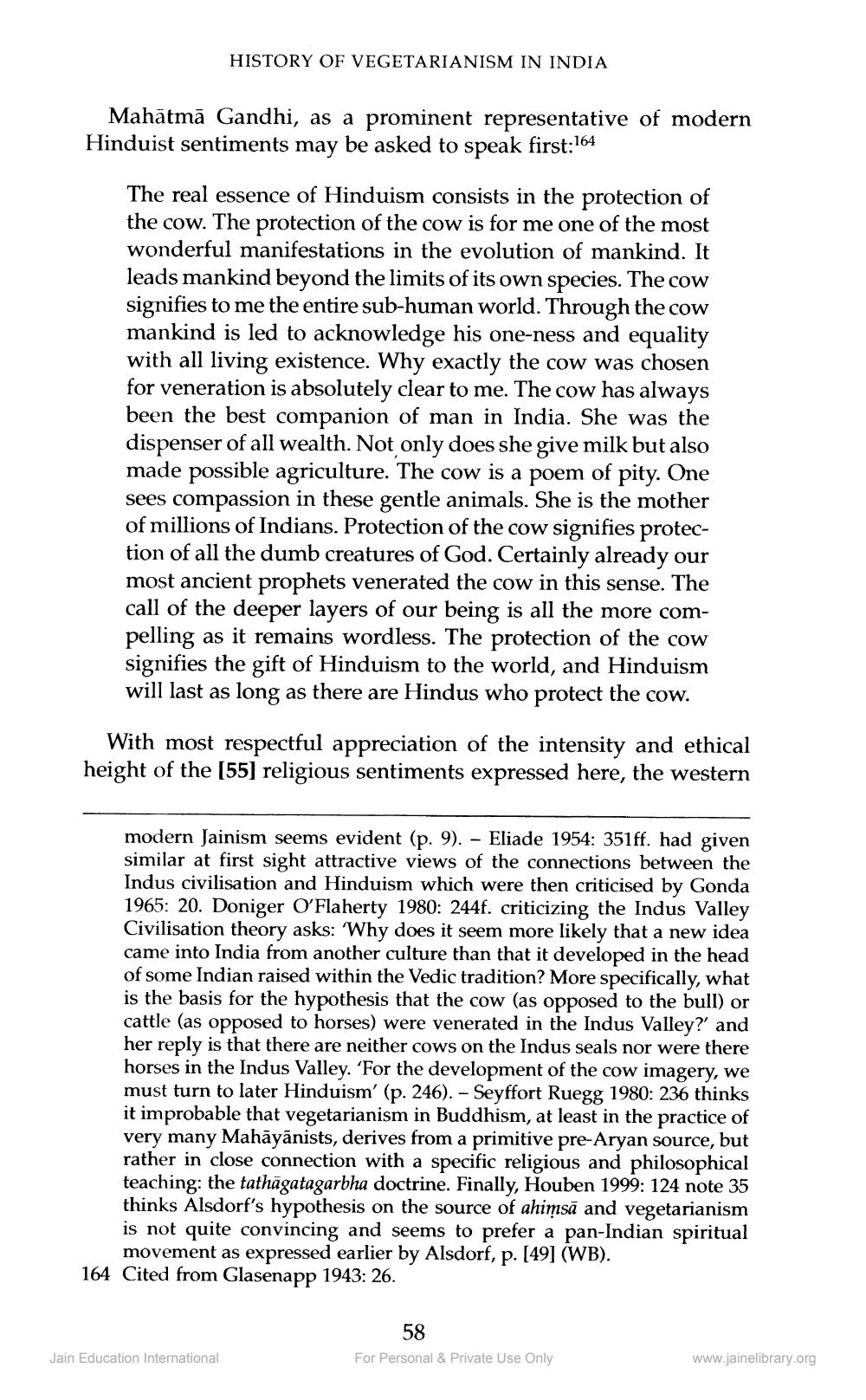________________
HISTORY OF VEGETARIANISM IN INDIA
Mahātmā Gandhi, as a prominent representative of modern Hinduist sentiments may be asked to speak first:164
The real essence of Hinduism consists in the protection of the cow. The protection of the cow is for me one of the most wonderful manifestations in the evolution of mankind. It leads mankind beyond the limits of its own species. The cow signifies to me the entire sub-human world. Through the cow mankind is led to acknowledge his one-ness and equality with all living existence. Why exactly the cow was chosen for veneration is absolutely clear to me. The cow has always been the best companion of man in India. She was the dispenser of all wealth. Not only does she give milk but also made possible agriculture. The cow is a poem of pity. One sees compassion in these gentle animals. She is the mother of millions of Indians. Protection of the cow signifies protection of all the dumb creatures of God. Certainly already our most ancient prophets venerated the cow in this sense. The call of the deeper layers of our being is all the more compelling as it remains wordless. The protection of the cow signifies the gift of Hinduism to the world, and Hinduism will last as long as there are Hindus who protect the cow.
With most respectful appreciation of the intensity and ethical height of the [55] religious sentiments expressed here, the western
modern Jainism seems evident (p. 9). - Eliade 1954: 351ff. had given similar at first sight attractive views of the connections between the Indus civilisation and Hinduism which were then criticised by Gonda 1965: 20. Doniger O'Flaherty 1980: 244f. criticizing the Indus Valley Civilisation theory asks: Why does it seem more likely that a new idea came into India from another culture than that it developed in the head of some Indian raised within the Vedic tradition? More specifically, what is the basis for the hypothesis that the cow (as opposed to the bull) or cattle (as opposed to horses) were venerated in the Indus Valley?' and her reply is that there are neither cows on the Indus seals nor were there horses in the Indus Valley. “For the development of the cow imagery, we must turn to later Hinduism' (p. 246). - Seyffort Ruegg 1980: 236 thinks it improbable that vegetarianism in Buddhism, at least in the practice of very many Mahāyānists, derives from a primitive pre-Aryan source, but rather in close connection with a specific religious and philosophical teaching: the tathāgatagarbha doctrine. Finally, Houben 1999: 124 note 35 thinks Alsdorf's hypothesis on the source of ahimsā and vegetarianism is not quite convincing and seems to prefer a pan-Indian spiritual
movement as expressed earlier by Alsdorf, p. [49] (WB). 164 Cited from Glasenapp 1943: 26.
58 For Personal & Private Use Only
Jain Education International
www.jainelibrary.org




